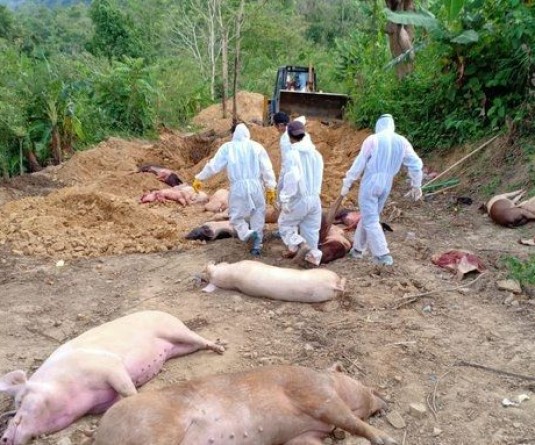
Guwahati, February 9 (IANS): The number of waterfowl in Assam's world-famous Kaziranga National Park and Tiger Reserve (KNP & TR) in the latest census increased by 173 per cent and the species' numbers rose to 112 from 99, officials said on Tuesday.
KNP & TR Director Karmashree P. Sivakumar said that a total of 93,491 birds belonging to 112 species were recorded in the two-day third annual waterfowl census on February 6 and 7.
"The number of wetland birds counted in the second census last year was 34,284 belonging to 99 species and the 10,412 waterfowl belonging to 80 species recorded during the baseline survey in 2018," Sivakumar said. He said the highest number of species - 26 - are from the family Anatidae, which is the family of ducks and geese.
The other species with considerable numbers include gadwall, common coot, lesser whistling duck, Indian spot-billed duck, little cormorant, ferruginous duck, tufted duck, Eurasian wigeon, Asian openbill, northern lapwing, ruddy shelduck and spot-billed pelican.
"The top three species counted by number are Eurasian Coot, Bar-headed Geese and Common Teal. Of the 112 waterfowl species found in Kaziranga, 58 are migratory species visiting Kaziranga from different parts of the world including Europe, Central Asia and East Asia."
The Indian Forest Service official told IANS that this rise in the number of birds visiting KNP & TR can be attributed to improved habitat management, water conservation measures and wetland management, increase in area of coverage and decrease in biotic pressure carried out by them. He said that the maximum increase in number of birds is witnessed in Laokhowa-Burhachapori Wildlife Sanctuary where the number of birds increased from 9,244 individuals to 71,902.
"The main objectives of the census and study were to record and estimate waterfowl and winter migratory birds and to monitor and assess the health of wetlands. In order to carry out this census exercise, 52 wetlands across the Kaziranga Tiger Reserve were identified and 36 seasoned birders were involved in the exercise as enumerators," Sivakumar said.
The counting of birds was carried out from 6 a.m. in the morning on Saturday to 4 p.m. in the afternoon and the data gathered during the exercise were compiled the next day (Sunday). The results were declared on Tuesday by Principal Chief Conservator of Forests (Wildlife) Amit Sahai.
Set up in 1908, the Kaziranga National Park, a UNESCO World Heritage site since 1985, has 92 permanent and more than 250 seasonal water bodies besides streams and rivers such as the Diffolu meandering through it. Rhino, elephant, tiger, Asiatic buffalo, swamp deer, wild boar, hog deer and waterfowl are the main attractions in the 1,302 sq km park in view of their ecological significance.
According to environmental experts, the area under wetlands in Kaziranga reduced from 8.5 per cent of the total area to 6.7 per cent during the past three decades. Experts consider Kaziranga one of the best conserved wildlife reserves on earth.
The KNP & TR, extending across Assam's Golaghat, Nagaon, Sonitpur, Biswanath and Karbi Anglong districts and along the Arunachal border, is home to more than 2,200 one-horned Indian rhinoceros. With an estimated rhino population of 2,640, Assam has the largest number of Indian one-horned rhinos in the world.


.jpg)



